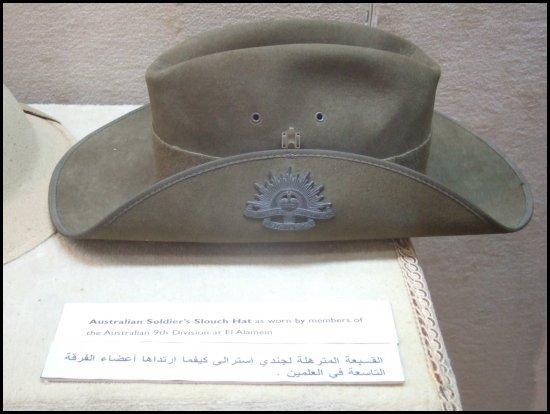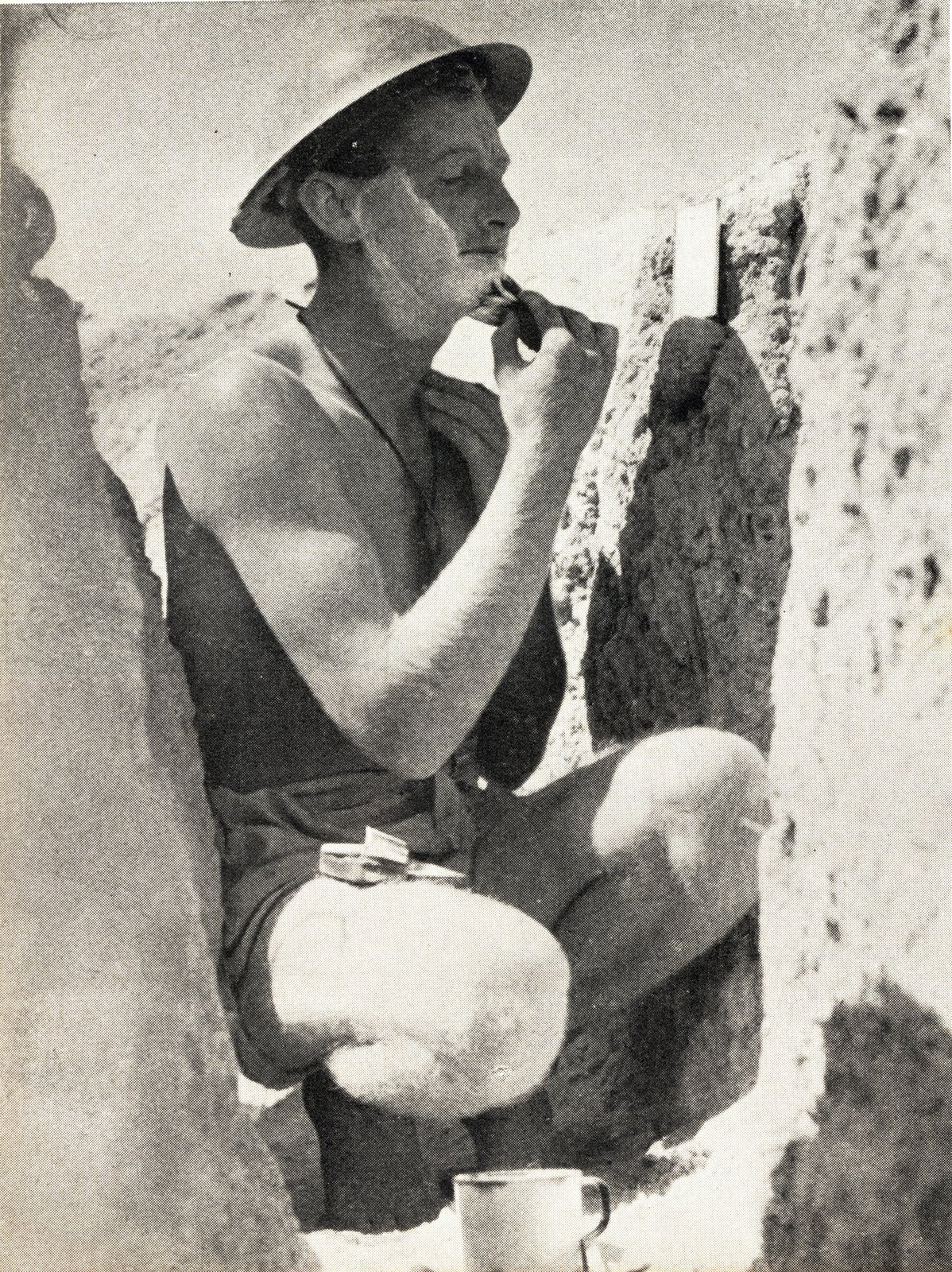
Tuesday, August 19, 2008
[Image] The German MG34 Machine Gun

Saturday, August 2, 2008
[Image] The Gateway to Fortress Tobruk
The gateway to the heart of Tobruk and it's inner defenses and harbour lay through the southern approaching El-Adem Road. It is at this point that Rommel first probed the defenses of the Garrison in the Easter Battle of 1941.
This heavily fortified and defended position is guarded by Pvt. Earl of the 2/13th Battalion. I have not been able to identify this digger any further at this stage. He sits astride a concrete pillar with his Lee-Enfield .303 with fixed bayonet. Being on the line he is also wearing his Tin Hat.
The gateway was surrounded by an anti-tank ditch and huge amount of barbed wire. The steel poles set into the concrete could be slid back to allow access for approved vehicles. Interestingly, when Rommel's tanks did first attack Tobruk in this area they chose not to breech the line at this point. That was one of their only wise decisions that weekend.
image 007499 Australian War Memorial.
Thursday, July 24, 2008
[Hero] NX15705 Cpl John Hurst Edmondson V.C.

2/17th Infantry Battalion, 20th Brigade, 9th Division
When the 7th Division embarked for Palestine in Oct 1940 little would they know that for some of them they would be arrive to be members of the newly formed 9th Division. As the divisions for WW2 were formed and numbered in the order of enlistment and began with the 6th Division (the 1st to 5th Divisions having been previously allocated for WW1) the members of the 7th Division were amongst the second wave of mass enlistments that occurred in early to mid 1940. The men of the former 7th Division were horrified to find themselves a part of the 9th Division. These men were often incorrectly labeled "The Long Thinkers" by the men of the 6th Division, a reference to the time it took for the men to decide to enlist.
With the 9th Division's deployment to Libya to relieve the 6th Division who were pulled out for the defence of Greece, Cpl Edmondson and his battalion (of whom my grandfather was a member) first engaged the German's in what was to be later known as "The Benghazi Handicap", the hasty retreat back to the shelter of the city of Tobruk.
Not long after arriving from this harrowing journey Cpl Edmondson's section was deployed on the outer perimeter of Tobruk's defences at post R33 in the Red Line. This was the area that was first attacked by Rommel's Panzer Division in what was to be known as "The Easter Battle".
Cpl. Edmondson's Victoria Cross was awarded posthumously (as too many are), for action during The Easter Battle of 13-14th April, 1941. The passage in the London Gazette of 1 July, 1941, gave the following details of Edmondson's deeds:
"On the night of 13th-14th April, 1941, a party of German infantry broke through the wire defences of Tobruk, and established themselves with numerous machine guns, mortars and field pieces. Led by an officer, Corporal Edmondson and five privates carried out a bayonet charge upon them under heavy fire. Although wounded in the neck and stomach Corporal Edmondson not only killed one of the enemy, but went to the assistance of his officer, who was attacked by a German from behind while bayoneting another who had seized him about the legs. Despite his wounds, from which he later died, Corporal Edmondson succeeded in killing these two Germans also, thus undoubtedly saving his officer's life."
John Hurst Edmondson's Victoria Cross was the first of twenty received by Australian Forces in WW2. As a result it carried with it quite a bit of propaganda value for the Allies who were in need of good news. John Edmondson's V.C. is currently on display in the Hall of Valour at the Australian War Memorial. John Hurst Edmondson V.C. is buried in the Tobruk War Cemetery.








